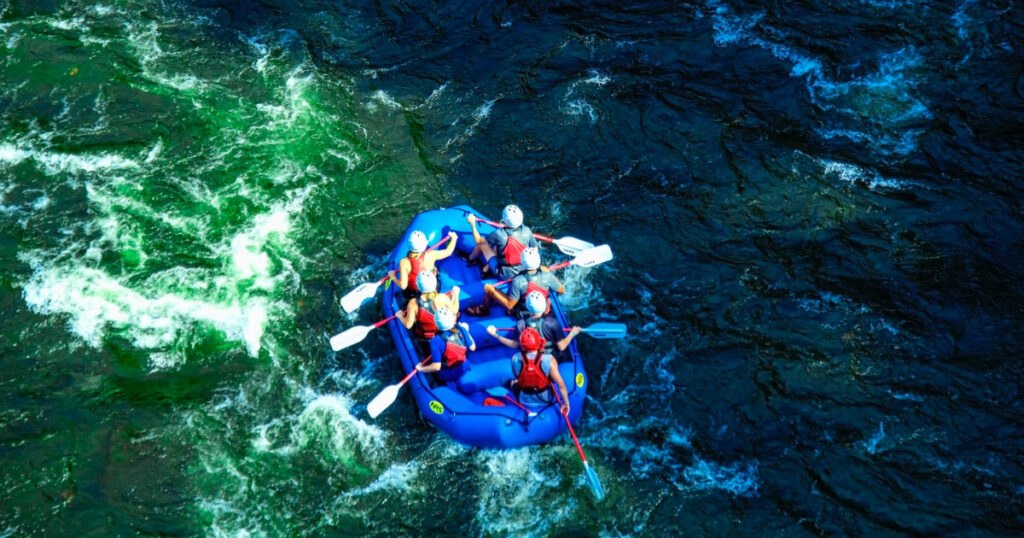Like many of the most exciting sports and recreational activities, white water rafting does have some risk. You will have to keep these risks in mind if you want to try it out. It’s all a question of determining if the thrill of rafting through rapids is worth the risk of injury. Is white water rafting dangerous? Yes, it can be. Let’s get into it.
You need to know what that risks of rafting in white water are in order to decide if this is something you want to do.
Understanding the dangers (and how to minimize them) will help you determine whether you think it’s worth taking those risks for the fun and memories you’ll enjoy out on the water.
In this article, I’ll go over some of the potential risks and dangers of white water rafting, and tell you how to make rafting safer.
White Water Rafting Dangers
Here are the top 5 dangers of white water rafting you should take into consideration and prepare for:
Risk of Drowning
Falling in the water and being carried off by the current can result in drowning. This is the most significant risk of white water rafting.
Even if you are a good swimmer and wear a personal flotation device, strong white water currents can still overpower you. As you white water raft, there is always a chance that the raft could flip over and you could fall out.

You absolutely must wear a personal flotation device when you go white water rafting (or do any other activity on the water, for that matter). You must still exercise an abundance of caution because the water’s force can be stronger than your life jacket’s buoyancy.
The powerful currents in white water can pull you under. Ensure that you are with a guide who will do everything they can to save you if you fall into the water.
Risk of Hypothermia
White water is always very cold because it is created by snow melt, the water at the bottom of reservoirs, and spring run off. You can wear a dry suit or wet suit when you go white water rafting. However, you will still certainly feel the impact of the water’s temperature. This is especially the case if you fall in.
In order to reduce this risk, you should preferably go white water rafting in the summer months when temperatures are warmer.
Danger of Colliding with Rocks
Another potential danger of white water rafting is the possibility of crashing into rocks. It’s quite common for this to occur while you’re in the raft.
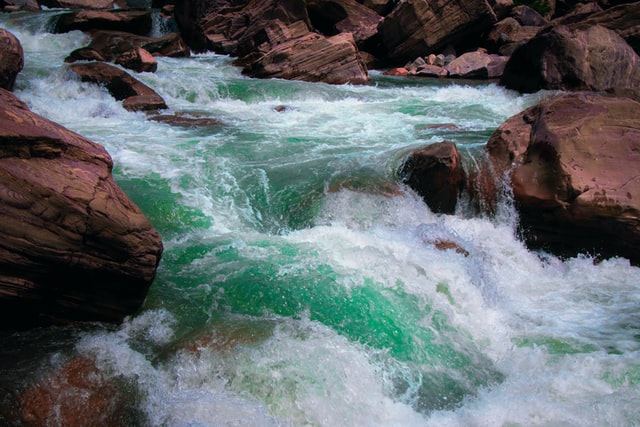
Rafts in white water can crash into boulders and you could even be catapulted into them. The paddles that necessarily swing in the raft can also hit you.
Risk of Over-Exertion
Overexerting yourself while white water rafting is another possible hazard that many people overlook.
People have suffered heart attacks and other potentially fatal issues due to overexertion while rafting through white water.
Know yourself, and make sure you are in good physical condition before even thinking about going rafting on white water.
Danger of Becoming Entangled with River Features
If you end up falling into water and having to swim, you could get stuck in a river feature.
For example, you could get stuck in downed trees (also called strainers), pinned on rocks, or stuck in a white water hole. If this happens, you could quickly drown, and this is a risk for anyone – even the best swimmers and most fit individuals.
I always recommend scouting out the rapids so you’re aware of obstacles and can avoid them before beginning your run.
Tips for Staying Safe While White Water Rafting
There are many steps that you can take to try to protect yourself from danger and injury while white water rafting.
If you choose to take part in this activity (it’s loads of fun, and worth the risk in my view), you should consider taking some of these precautions to stay safe on the water.
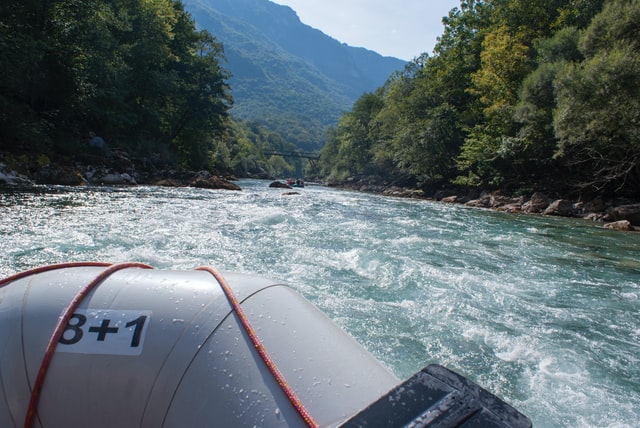
Here are my 4 tips for staying safe while white water rafting:
- White water rafting rivers are graded in accordance with an International Grading System. Selecting a grade of river that fits your level of physical fitness can minimize your risk. Don’t even think about going onto a higher grade if you aren’t fit. They’re much more physically demanding. This is true even though you might still end up doing more paddling on a lower grade river.
- Don’t delude yourself about how fit you really are. You must be honest about how fit (or out of shape) you really are in order to make the safest decisions. Otherwise, you may miscalculate if white water rafting is dangerous for your fitness level.
- Listen closely to everything your guide tells you. Pay close attention to all the instructions they give during the bank briefing and while on the river. You must follow this guidance at all times or you’re putting yourself in unnecessary danger.
- Ensure you are wearing all the necessary safety equipment. This includes pieces such as helmets and life jackets. Wear your safety gear every moment you’re on the river. Make sure to fasten everything properly and securely.
Do Your Due Diligence When Choosing a Guide Company
Going white water rafting is not something you want to do without proper forethought. Do plenty of research well in advance on different tour providers and guides. Look at their websites and check through reviews from people who have gone white water rafting under their guidance and supervision.
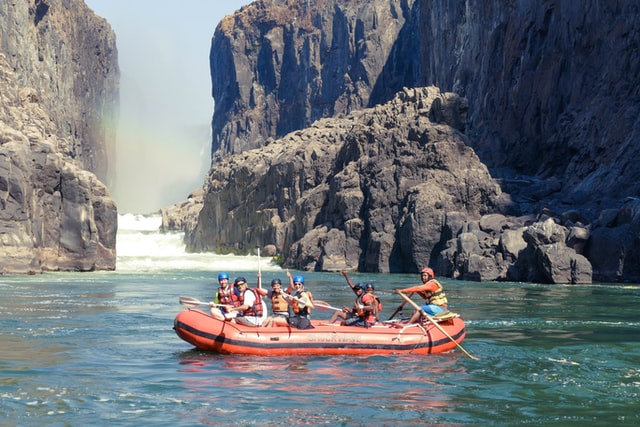
If you go on a white water rafting expedition, you must arrive at the meeting location for your trip by the specified time. This will ensure that you have time to get ready and hear all the instructions that will be provided by your guide. Find out beforehand exactly what you must wear and what equipment you will need to bring.
It’s essential that you’re extremely attentive as your guide gives their safety talk.
The information provided at this time could easily be the difference between life and death if something goes wrong and you fall into the water. You should learn about self-rescue techniques, paddling tips, common paddling commands, and assisted rescue techniques.
Remember that there can be (and most often are) potential hazards in every part of the river when you’re white water rafting. This is true even if the water seems relatively calm. This is because of how quickly hazards can develop and present themselves.
Is White Water Rafting Dangerous?
It Can Be, so Plan Carefully and Keep Safe
Proper forethought and planning are essential if you want to go white water rafting.
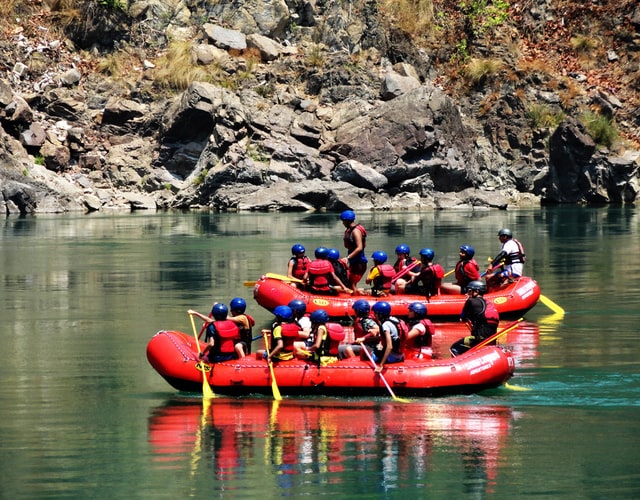
Be realistic and consider the risks carefully while deciding: is white water rafting dangerous? Is the thrill of rafting through rapids worth the risks for me?
As with any outdoor sport, it’s important to know yourself to determine if you’re comfortable with the dangers and risks inherent in the activity. For some, the risk and thrill of white water rafting is part of the appeal.

